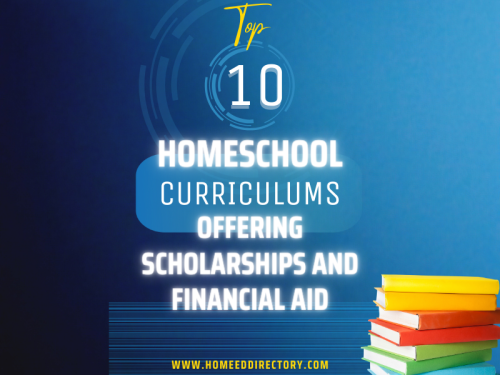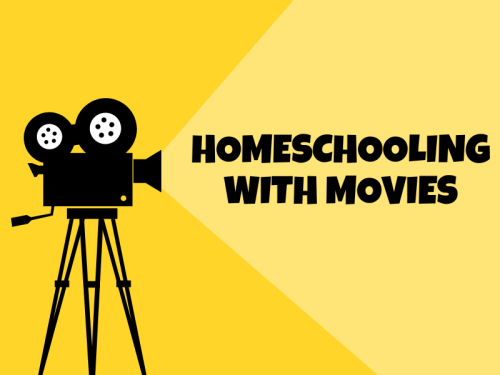Lesson plan by Kidsgardening.org
Click to Download this Garden Activity
Overview: Kids love butterflies! Encourage your child’s sense of connection to the natural world and invite butterflies into your landscape by planting a butterfly garden. A butterfly garden provides a colorful array of nectar-producing plants that not only attract butterflies (and often hummingbirds as well), but offers plants to feed the caterpillar stage of their life cycle. With the appropriate plantings, a butterfly garden provides opportunities to educate your children about the life cycle of a butterfly, allowing them to view each stage of growth and explore the intricate relationships of plants and animals.
Materials:
in-ground garden space, raised bed or container garden
trowel or shovel
flowering plants for adult butterfly
host plans for caterpillars
Approximate Time to Complete: 3 to 4 hours to plan, gather plants and install; multiple weeks to grow and attract butterflies
Location: Outdoor
Ages: fun for all ages
Season: spring through fall
Instructions:
Begin by finding a garden location that receives at least six to eight hours of sunlight and is sheltered from the wind. Your spot also needs to provide nighttime hiding places for butterflies such as small trees or large shrubs, and places for them to attach while in their chrysalis.
Select plants that grow well in your area. You need to include flowering plants that attract butterflies (many butterflies have favorite plants to sip from) and also leafy “host plants” that attract egg-laying butterflies and provide food for the caterpillars (also known as the larvae). It is always best to select native plants that will attract butterflies native to your area.
When selecting plants, choose a variety of species that bloom throughout the growing season. This will help lure the butterflies to your garden for longer periods. A mixture of annual and perennial plants can offer a wide assortment of blooms when butterflies are most active during mid- to late summer. Make it easy for passing butterflies to locate the flowers you’re providing by planting each kind of plant in groups of at least three.
Some flowering shrubs are also good butterfly attractors, including glossy abelia, lilac, summersweet, buttonbush, blueberry, mockorange, ninebark, and spicebush. Shrubs are a good addition because they can offer shelter for the butterflies in addition to food.
The aptly named butterfly bush (Buddleia) will also attract them, but be wary about planting it. Most of the varieties offered for sale are cultivars of Buddleia davidii, a species that has escaped from cultivation and become an invasive weed in many parts of the country (sale of fertile butterfly bush varieties is banned in Washington and Oregon). Breeders have developed some sterile varieties that don't set viable seeds and are the best choices for including in your garden. These include the cultivars 'Miss Molly' and 'Miss Ruby', and varieties in both the Flutterby and Lo & Behold series.
Here are a few examples of common butterflies and their preferred food sources:
Giant Swallowtail
Citrus, hop tree, prickly ash, rue
Lantana, orange tree
Eastern Black Swallowtail
Carrots, celery, dill, parsley, Queen Anne's lace, rue, Texas turpentine broom
Milkweed, phlox
Monarch
Milkweed
Milkweed, asters, red clover, zinnia, cosmos, lantana, pentas, daisy
Variegated Fritillary
Violets, pansies, stonecrops, passionflowers
Meadow flowers, hibiscus, composite family
American Painted Lady
Daisies, everlastings, and other composites
Burdock, daisy, everlastings, mallow, yarrow, zinnia, heliotrope
Orange Sulphur
White clover, alfalfa, vetch, lupine
Clovers, dandelion, parsley, zinnia, other meadow flowers, members of the composite family
Silver-Spotted Skipper
Beans, beggar's tick, licorice, locusts, wisteria
Many garden and meadow flowers
Plant your garden. Add one or two large, flat rocks in the sun so butterflies a place to bask when mornings are cool. Since butterflies cannot drink from open water, provide them with a "puddle" by filling a container, such as an old birdbath, with wet sand where they can perch and drink safely.
Once the garden is planted, stand back and wait for the butterflies to stop by. With a successful butterfly garden, your kids will be able to observe the developmental process of a butterfly. The eggs soon hatch, and the larvae appear and eat the leafy growth of the host plant, eventually developing into full-grown caterpillars. Remember, you will need to tolerate some leaf damage from your very hungry garden guests. Later, these caterpillars affix themselves to a twig or branch and form a chrysalis, entering the pupa stage. Within about two weeks, they metamorphose into butterflies and re-emerge.
*Special Note: Avoid all pesticides. Butterflies are insects, so it makes sense that insecticides — even those labeled "organic" — can harm them. Herbicides used to quell weeds can also harm nectar and host plants. If you feel that you must control pests, start with hand-picking or squishing the offenders, and make the area attractive to pest predators (ladybugs, lacewings, birds). To keep weeds in check, maintain a layer of mulch and pull weeds regularly.
KidsGardening.org is a national nonprofit focused on creating opportunities for kids to learn though gardening, engaging their natural curiosity and wonder by providing inspiration, community know-how and resources to parents and educators. Our website features a wide variety of lesson plans (https://www.kidsgardening.org/lesson-plans/), garden activities (https://www.kidsgardening.org/garden-activities/) and an extensive toolbox of gardening content(https://www.kidsgardening.org/gardening-toolbox/).
We also offer annual grant and award programs (https://www.kidsgardening.org/garden-grants/) and print publications (https://www.kidsgardening.org/kidsgardening-books-and-curricula/). You can visit our website at www.kidsgardening.org or contact us by email at info@kidsgardening.org.
Click to Download this Garden Activity
Overview: Kids love butterflies! Encourage your child’s sense of connection to the natural world and invite butterflies into your landscape by planting a butterfly garden. A butterfly garden provides a colorful array of nectar-producing plants that not only attract butterflies (and often hummingbirds as well), but offers plants to feed the caterpillar stage of their life cycle. With the appropriate plantings, a butterfly garden provides opportunities to educate your children about the life cycle of a butterfly, allowing them to view each stage of growth and explore the intricate relationships of plants and animals.
Materials:
in-ground garden space, raised bed or container garden
trowel or shovel
flowering plants for adult butterfly
host plans for caterpillars
Approximate Time to Complete: 3 to 4 hours to plan, gather plants and install; multiple weeks to grow and attract butterflies
Location: Outdoor
Ages: fun for all ages
Season: spring through fall
Instructions:
Begin by finding a garden location that receives at least six to eight hours of sunlight and is sheltered from the wind. Your spot also needs to provide nighttime hiding places for butterflies such as small trees or large shrubs, and places for them to attach while in their chrysalis.
Select plants that grow well in your area. You need to include flowering plants that attract butterflies (many butterflies have favorite plants to sip from) and also leafy “host plants” that attract egg-laying butterflies and provide food for the caterpillars (also known as the larvae). It is always best to select native plants that will attract butterflies native to your area.
When selecting plants, choose a variety of species that bloom throughout the growing season. This will help lure the butterflies to your garden for longer periods. A mixture of annual and perennial plants can offer a wide assortment of blooms when butterflies are most active during mid- to late summer. Make it easy for passing butterflies to locate the flowers you’re providing by planting each kind of plant in groups of at least three.
Some flowering shrubs are also good butterfly attractors, including glossy abelia, lilac, summersweet, buttonbush, blueberry, mockorange, ninebark, and spicebush. Shrubs are a good addition because they can offer shelter for the butterflies in addition to food.
The aptly named butterfly bush (Buddleia) will also attract them, but be wary about planting it. Most of the varieties offered for sale are cultivars of Buddleia davidii, a species that has escaped from cultivation and become an invasive weed in many parts of the country (sale of fertile butterfly bush varieties is banned in Washington and Oregon). Breeders have developed some sterile varieties that don't set viable seeds and are the best choices for including in your garden. These include the cultivars 'Miss Molly' and 'Miss Ruby', and varieties in both the Flutterby and Lo & Behold series.
Here are a few examples of common butterflies and their preferred food sources:
Giant Swallowtail
Citrus, hop tree, prickly ash, rue
Lantana, orange tree
Eastern Black Swallowtail
Carrots, celery, dill, parsley, Queen Anne's lace, rue, Texas turpentine broom
Milkweed, phlox
Monarch
Milkweed
Milkweed, asters, red clover, zinnia, cosmos, lantana, pentas, daisy
Variegated Fritillary
Violets, pansies, stonecrops, passionflowers
Meadow flowers, hibiscus, composite family
American Painted Lady
Daisies, everlastings, and other composites
Burdock, daisy, everlastings, mallow, yarrow, zinnia, heliotrope
Orange Sulphur
White clover, alfalfa, vetch, lupine
Clovers, dandelion, parsley, zinnia, other meadow flowers, members of the composite family
Silver-Spotted Skipper
Beans, beggar's tick, licorice, locusts, wisteria
Many garden and meadow flowers
Plant your garden. Add one or two large, flat rocks in the sun so butterflies a place to bask when mornings are cool. Since butterflies cannot drink from open water, provide them with a "puddle" by filling a container, such as an old birdbath, with wet sand where they can perch and drink safely.
Once the garden is planted, stand back and wait for the butterflies to stop by. With a successful butterfly garden, your kids will be able to observe the developmental process of a butterfly. The eggs soon hatch, and the larvae appear and eat the leafy growth of the host plant, eventually developing into full-grown caterpillars. Remember, you will need to tolerate some leaf damage from your very hungry garden guests. Later, these caterpillars affix themselves to a twig or branch and form a chrysalis, entering the pupa stage. Within about two weeks, they metamorphose into butterflies and re-emerge.
*Special Note: Avoid all pesticides. Butterflies are insects, so it makes sense that insecticides — even those labeled "organic" — can harm them. Herbicides used to quell weeds can also harm nectar and host plants. If you feel that you must control pests, start with hand-picking or squishing the offenders, and make the area attractive to pest predators (ladybugs, lacewings, birds). To keep weeds in check, maintain a layer of mulch and pull weeds regularly.
KidsGardening.org is a national nonprofit focused on creating opportunities for kids to learn though gardening, engaging their natural curiosity and wonder by providing inspiration, community know-how and resources to parents and educators. Our website features a wide variety of lesson plans (https://www.kidsgardening.org/lesson-plans/), garden activities (https://www.kidsgardening.org/garden-activities/) and an extensive toolbox of gardening content(https://www.kidsgardening.org/gardening-toolbox/).
We also offer annual grant and award programs (https://www.kidsgardening.org/garden-grants/) and print publications (https://www.kidsgardening.org/kidsgardening-books-and-curricula/). You can visit our website at www.kidsgardening.org or contact us by email at info@kidsgardening.org.





